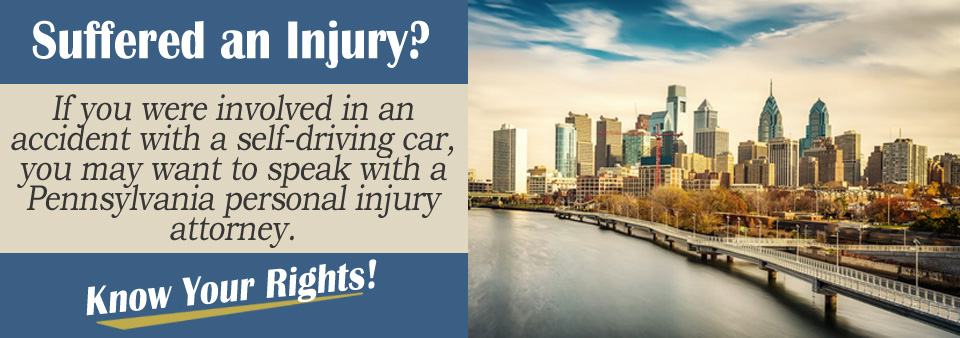With self-driving cars having become reality, the landscape of personal injury claims has started to change. If a driver acts in a negligent manner, he or she becomes responsible for the damages that result.
In the event an accident is caused by a self-driving vehicle, you will have to prove that the vehicle did malfunction and that that caused the accident.
Self-driving vehicles were created with a lot of electronic equipment that allows them to safely navigate themselves because of the ability to sense their surroundings. Using GPS, laser vision, odometer, computer vision, and radar the car can sense its surroundings and where it is going.
If you have been in an accident with a self-driving car, you need to consult with a personal injury attorney.
How Negligence Comes into Play
For your personal injury claim to succeed, your task is to prove that negligence led to the accident that resulted in your injuries and damages. There are four elements of negligence, duty, breach, causation, and damages.
If you can prove these four elements, then negligence has been proven. When a vehicle is on the road, the driver has a responsibility to act in a manner to not cause harm to others.
If that duty is breached, then an accident results and you suffer damages caused by that accident, you have a successful claim. In Pennsylvania, comparative negligence laws are used. Comparative negligence allows you to seek compensation for your damages if you were less negligent than the other party.

Pennsylvania Accident and Insurance Laws
In Pennsylvania, comparative negligence laws are used when it comes to personal injury claims. This means that just so long as you are not as much at fault as the other party you can pursue damages. For example, the other driver was 60% at fault for the accident and you were 40% at fault.
You can recover damages that are reduced in proportion to your degree of fault for them. Therefore, if your claim is $100,000, you could recover $60,000 if the self-driving vehicle was at fault.
An example of how a crash might have occurred might involve the self-driving vehicle failing to stop in time and rear-end your vehicle at a stop sign.
Pennsylvania auto insurance laws require minimum coverage in the amount of bodily injury liability of $15,000 per person and $30,000 per accident. Laws require you to have both medical benefits (no-fault) and liability coverage.
Pennsylvania is a no-fault state, which means you and your passengers will have medical bills after a car accident regardless of who is at fault. You are required to have at least $5,000 medical benefits coverage included with your car insurance policy.
When auto insurance is purchased in Pennsylvania, you have two options, which include either the limited right to sue or the full tort right to sue. The limited tort right to sue comes with a lower cost for coverage but limits your ability to file a claim for pain and suffering.
Speak With A Personal Injury Attorney
If you have been involved in an accident with a self-driving vehicle, you should consult with a Pennsylvania personal injury attorney. There is a two-year statute of limitations for pursuing an accident injury claim in the state. Complete the Free Case Evaluation Form on this page to get your free case review.